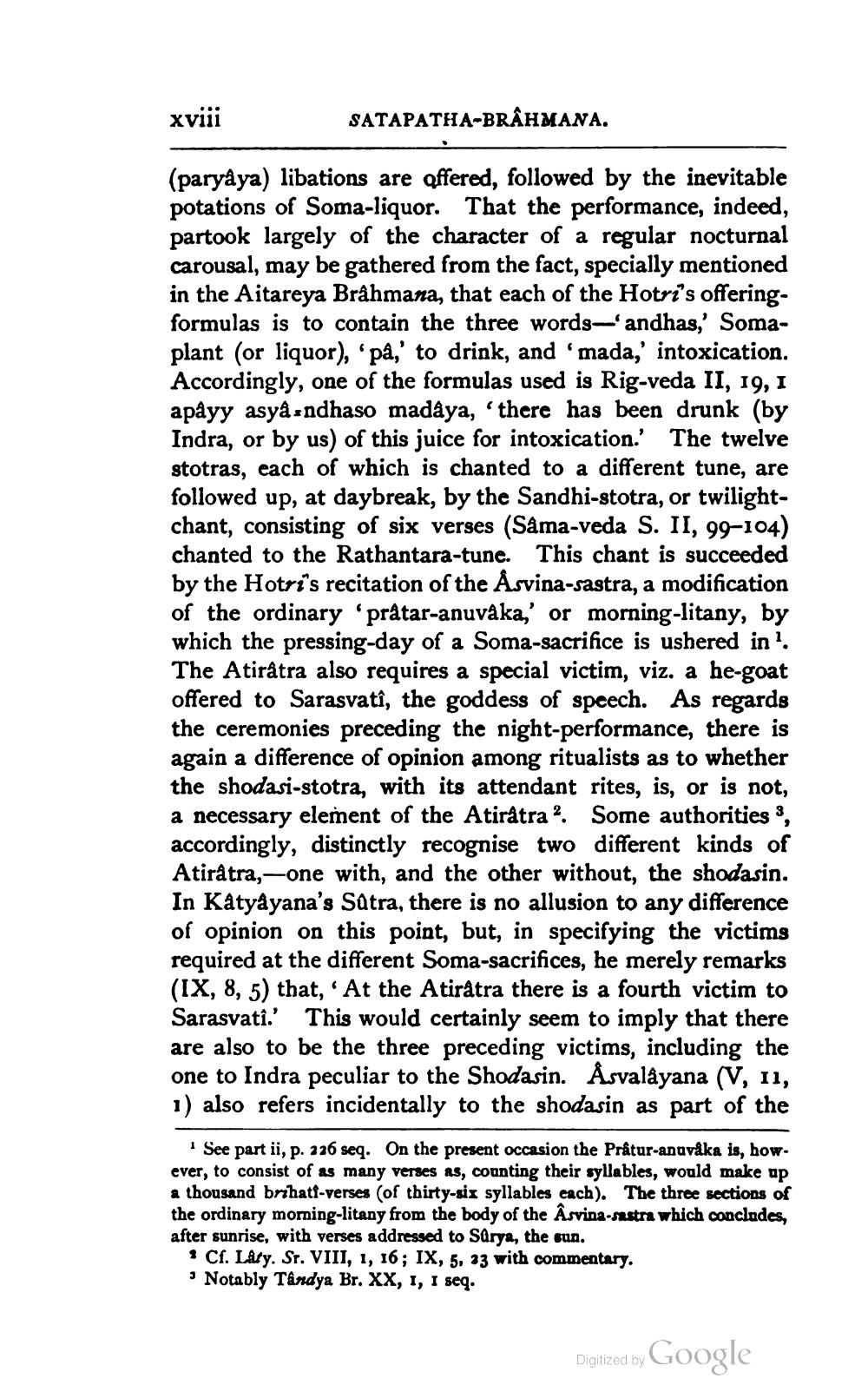________________
xviii
SATAPATHA-BRAHMANA.
(paryaya) libations are offered, followed by the inevitable potations of Soma-liquor. That the performance, indeed, partook largely of the character of a regular nocturnal carousal, may be gathered from the fact, specially mentioned in the Aitareya Brahmana, that each of the Hotri's offeringformulas is to contain the three words~'andhas,' Somaplant (or liquor), 'på,' to drink, and 'mada,' intoxication. Accordingly, one of the formulas used is Rig-veda II, 19, I apâyy asya-ndhaso madâya, 'there has been drunk (by Indra, or by us) of this juice for intoxication. The twelve stotras, each of which is chanted to a different tune, are followed up, at daybreak, by the Sandhi-stotra, or twilightchant, consisting of six verses (Sama-veda S. II, 99–104) chanted to the Rathantara-tune. This chant is succeeded by the Hotri's recitation of the Åsvina-sastra, a modification of the ordinary prâtar-anuvāka,' or morning-litany, by which the pressing-day of a Soma-sacrifice is ushered in? The Atirâtra also requires a special victim, viz, a he-goat offered to Sarasvatî, the goddess of speech. As regards the ceremonies preceding the night-performance, there is again a difference of opinion among ritualists as to whether the shodasi-stotra, with its attendant rites, is, or is not, a necessary element of the Atirátra . Some authorities, accordingly, distinctly recognise two different kinds of Atirâtra,-one with, and the other without, the shodasin. In Katyayana's Satra, there is no allusion to any difference of opinion on this point, but, in specifying the victims required at the different Soma-sacrifices, he merely remarks (IX, 8, 5) that, ' At the Atirätra there is a fourth victim to Sarasvati.' This would certainly seem to imply that there are also to be the three preceding victims, including the one to Indra peculiar to the Shodasin. Åsvaldyana (V, 11, 1) also refers incidentally to the shodasin as part of the
See part ii, p. 226 seq. On the present occasion the Prâtur-anavåka is, how. ever, to consist of as many verses as, counting their syllables, would make up a thousand brihati-verses (of thirty-six syllables each). The three sections of the ordinary morning-litany from the body of the Asvina-sastra which conclades, after sunrise, with verses addressed to Sarya, the sun.
* Cf. Láty. Sr. VIII, 1, 16; IX, 5, 33 with commentary. • Notably Tandya Br. XX, 1, 1 seq.
Digitized by Google




